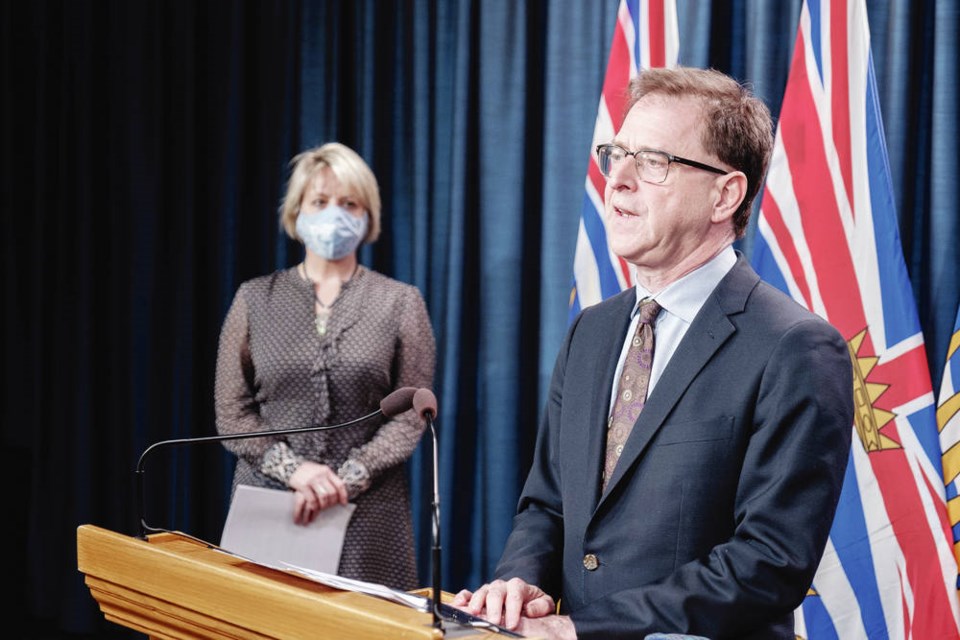A year ago Health Minister Adrian Dix cancelled all non-emergency surgeries in B.C. and emptied out thousands of hospital beds.
It was the most stunning of all the measures slammed into place in response to the COVID-19 pandemic. Surgeries and wait lists are a dominant topic of conversation for people in late-middle age and beyond. People in that cohort are much more used to hearing health ministers desperately talk about doing more such surgeries, not cancelling them altogether.
Dix said it was one of the toughest decision he’s ever made.
He justified it again Friday by citing the enormity of the threat.
Medical people were hearing from colleagues around the world about their crises. There was intense coverage of hard-hit areas like northern Italy.
The mass cancellation was needed to keep the B.C. health system stable, he said. “Some will say the onslaught did not come as it did in Italy and China. In retrospect, that’s true. But from what we knew at the time … it was absolutely the right decision.”
After bracing for the worst-case scenario, it never developed. The emptying of almost 4,000 beds was ordered in an abundance of caution in the face of frightening scenes of jammed hospitals elsewhere in the world. But the B.C. hospitalization count for COVID-19 patients peaked in the spring at 149 and cases started to subside later on.
By the time health officials re-modelled their scenarios and eased the restrictions, there were just 74 COVID-19 patients in hospital. That number subsided through the summer, then climbed back up during the fall and winter to 286 as of Friday.
The striking thing is how well people took it. Tens of thousands of people were at the very least inconvenienced and many suffered longer than they would have. Some objected but there was no obvious groundswell of unrest.
Dix has repeatedly paid tribute to the people on the waiting list, who are among the heroes of the pandemic.
On Friday he delivered an update on the surgical situation and the government statistics show they have almost caught up to the backlog that was created. There’s a big payoff in store that goes beyond clearing the backlog.
It’s clear from the briefing that the surgical renewal effort is turning into a permanent on-going expansion of surgical capacity.
The curtailment lasted two months and meant 32,400 fewer scheduled surgeries. Non-urgent surgeries resumed in May 2020. Many on the wait list opted not to proceed, which left 15,373 to do, on top of the regular workload that resumed.
The statistics show more urgent scheduled surgeries are being performed now than before the pandemic, and wait lists in that category and others have been reduced.
Longer hours, weekend schedules, opening unused space, contracting and other capacity improvements have been implemented since May. In the most recent reporting period, November to February, operating rooms in B.C. ran 5,246 more hours than the same time frame a year ago.
All it took to catch up was a concentrated system-wide effort, and lots of money.
It has cost $187.5 million to date, with more to come. Most of it went to hiring more medical staff. Since April 2020, 44 surgeons, 54 anesthesiologists and more than 700 nurses have been hired, plus a variety of technicians. The total is 1,167.
Michael Marchbank, a health administrator pulled out retirement to design the catch-up plan, said it is gaining momentum. There are month-to-month improvements in the counts.
Almost 400 of the additional medical staff have been hired in the last three months.
“This is a tremendously powerful statement about our health care system and the people who work in it.”
He said the system is not only catching up, “but making a permanent increase in surgeries for the long-term patient demand that we know is there.”
Hundreds more nurses and other staff are being trained and they will sustain the expanded system.
Marchbank, who is moving on shortly, said producing such a jump in capacity in such a short time is unprecedented.
There are 84,000 people on waiting lists in B.C. at present. There will always be waiting lists, but if the initiative is maintained, those lists will be shorter than they once were.
lleyne@timescolonist.com



